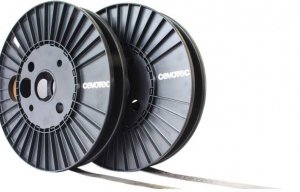
Cevotec has it taped
The autonomous machine can move up to 30 metres in length and lay down continuous carbon fibre composites at a rate of 100 metres per minute.

15th August 2024
Innovation in Textiles
|
Middle Rover, MD, USA
The largest automated fibre placement (AFP) machine to date is currently being constructed at the plant of Rocket Lab USA in Middle Rover, Maryland, to automate production of some of the biggest carbon composite rocket structures in history.
The custom-built robotic machine, being built by Washington-based Electroimpact, is 12 metres high, weighs 90 tons and has completed final acceptance testing.
It will automate the production of large composite structures for the Neutron launch vehicle, including the panels that make up its 28 metres long interstage and fairing.
The autonomous machine can move up to 30 metres in length and lay down continuous carbon fibre composites at a rate of 100 metres per minute.
The AFP machine also has a fully automated real-time inspection system that can detect miniscule defects throughout the laminated carbon composite and alert the machine operator to any issues before the machine begins laying down its next layer, providing additional assurance that the critical structures of the launch vehicle meet Rocket Lab’s high-quality standards required for reusable Neutron launches.
As Neutron’s carbon composite structures move into full-scale production, the machine is expected to introduce significant time-savings of more than 150,000 manufacturing hours into the production process.
“As we build the world’s largest carbon composite rocket, it makes sense that we require a world-first carbon composite fibre placement machine,” says Rocket Lab founder and CEO Sir Peter Beck “We’re combining our proprietary flight-proven carbon composite technology, additive manufacturing and autonomous robotics to design and build large-scale aerospace components at a pace that will support not only Neutron’s launch cadence, but support Electron and carbon composites structures for our spacecraft customers too. We worked closely with our excellent partners at Electroimpact to create this robot and we’re thrilled with the results. It’s an innovative machine producing a next-generation rocket from one of the birthplaces of the aerospace industry in Baltimore, and we can’t wait to see its first carbon composite printed panels come off the production line soon.”
The AFP machine will also be leveraged to print smaller carbon composite Neutron structures for the first stages of Rocket Lab’s Electron launch vehicle and other flight-proven carbon composite structures for space.

Business intelligence for the fibre, textiles and apparel industries: technologies, innovations, markets, investments, trade policy, sourcing, strategy...
Find out more